Moments in time: THE CARTOUCHE (AND SHEN RING) IN EGYPTIAN HIEROGLYPHS? - some examples from and some abstract illustrations concerning Ancient Egypt’s 18th Dynasty; with an exception,* from the Ptolemaic period:

Moments in time: THE CARTOUCHE (AND SHEN RING) IN EGYPTIAN HIEROGLYPHS? - some examples from and some abstract illustrations concerning Ancient Egypt’s 18th Dynasty; with an exception,* from the Ptolemaic period:
‘Writing: Hieroglyphic Writing’ - ‘Direction of the writing - The lines of hieroglyphs were written from right to left or, less frequently, from left to right. Vertical rows of signs could be placed next to horizontal rows, according to the demands of the architectural setting. The direction of the writing is immediately ascertainable because the signs almost always face the beginning of the row. Occasionally, some signs are turned around in the row, presumably so that two human figures can face one another and thus avoid standing with their backs toward each other. These rotations of signs are infrequent, however, and are found almost exclusively in the names of Kings. Royal names were enclosed in a ring, the so-called ‘cartouche’. This ring, originally a rope, was supposed to protect the bearer of the enclosed name from injury and from harmful magic’ (The New Encyclopædia Britannica, 2005, 15th Edition, Vol. 29 - ‘Writing: Hieroglyphic Writing’ - p. 1039).
Picture image details and source URLs, for the picture images, No. [1] - No. [15]:
No. [1] A description of the use of the ‘cartouche’ in Ancient Egypt. The New Encyclopædia Britannica’s description 2005, 15th Edition, Vol. 29 - ‘Writing: Hieroglyphic Writing’ - p. 1039.
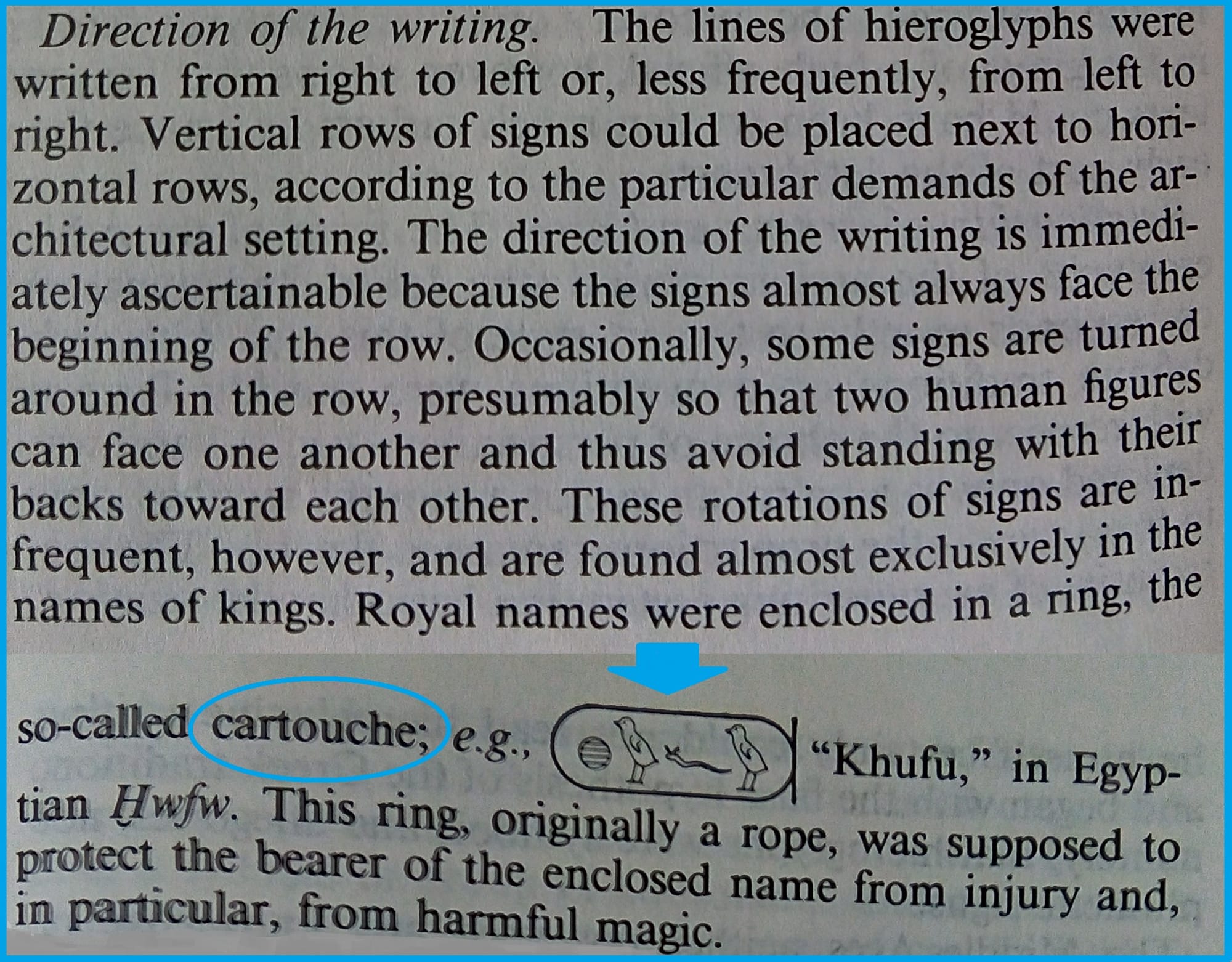
No. [2] An abstract illustration ‘picture-scape’ from the Great Temple of the Aten, Tell el-Amarna (Akhetaten) 18th Dynasty, Ancient Egypt; showing hieroglyphs related to Akhenaten, his ‘Great Royal Wife’ Nefertiti and their family (Nefertiti’s daughters) - Wikipedia.org - https://commons.wikimedia.org/wiki/Category:Nefertiti
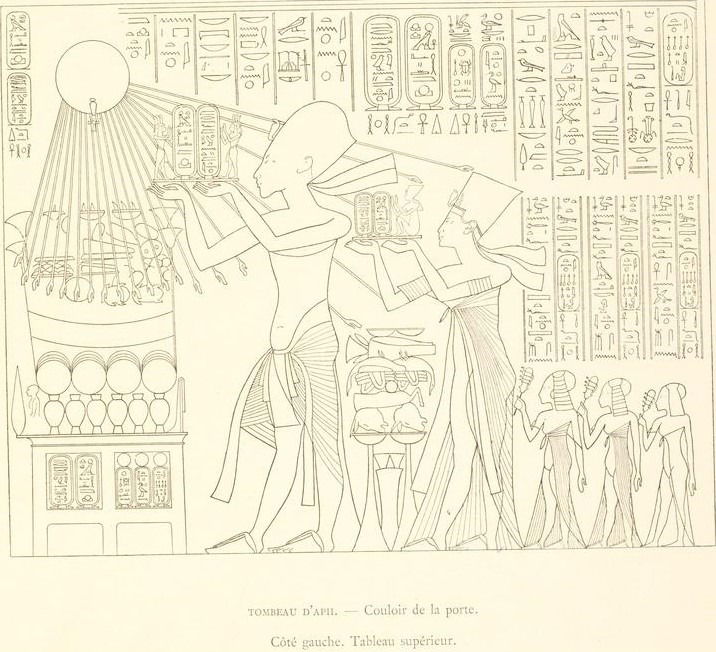
No. [3] The ‘Torso of Nefertiti - Aten ‘cartouches’’ held at The Metropolitan Museum of Art, New York (1): from the Great Temple of the Aten, Tell el-Amarna (Akhetaten) 18th Dynasty, Ancient Egypt; made from indurated limestone (Cir. 1352 - 1336 BC) - Wikimedia.org - https://commons.wikimedia.org/wiki/Category:Statues_of_Nefertiti
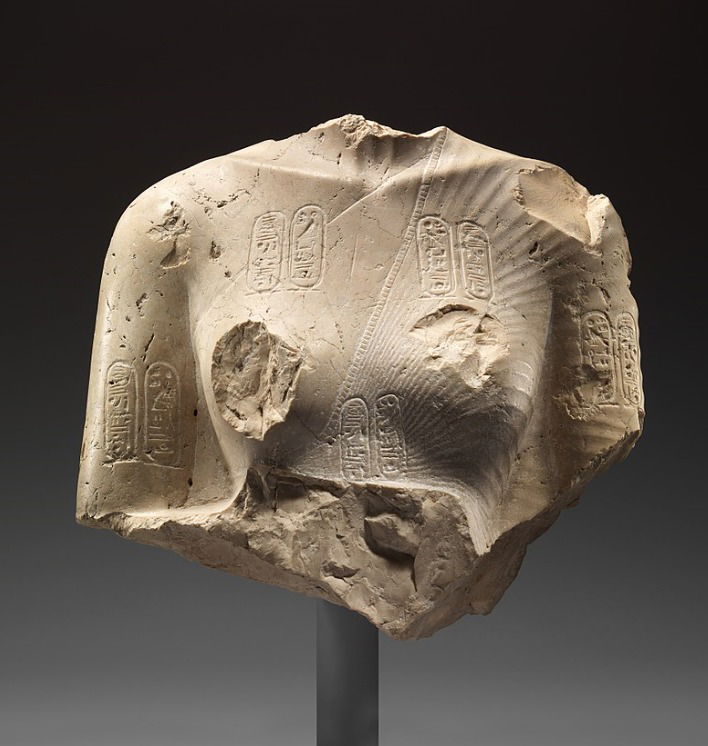
No. [4] A close-up image (see, No. [3]) highlighting the ‘cartouches’, left and right, found on the ‘Torso of Nefertiti - Aten ‘cartouches’’ held at The Metropolitan Museum of Art, New York (2): from the Great Temple of the Aten, Tell el-Amarna (Akhetaten) 18th Dynasty, Ancient Egypt; made from indurated limestone (Cir. 1352 - 1336 BC) - (Wikipedia.org - https://commons.wikimedia.org/wiki/Category:Statues_of_Nefertiti)
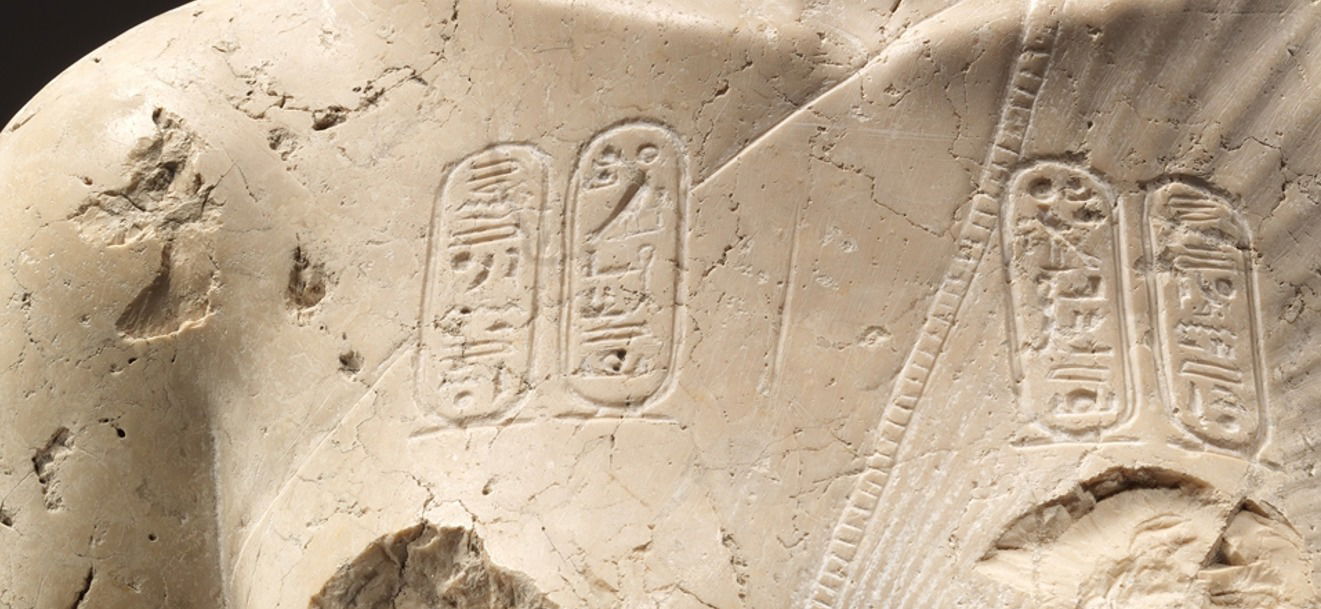
No. [5] An abstract illustration of the ‘cartouches’, left and right, found on the ‘Torso of Nefertiti - Aten ‘cartouches’’ held at The Metropolitan Museum of Art, New York: from the Great Temple of the Aten, Tell el-Amarna (Akhetaten) 18th Dynasty, Ancient Egypt; made from indurated limestone (Cir. 1352 - 1336 BC).
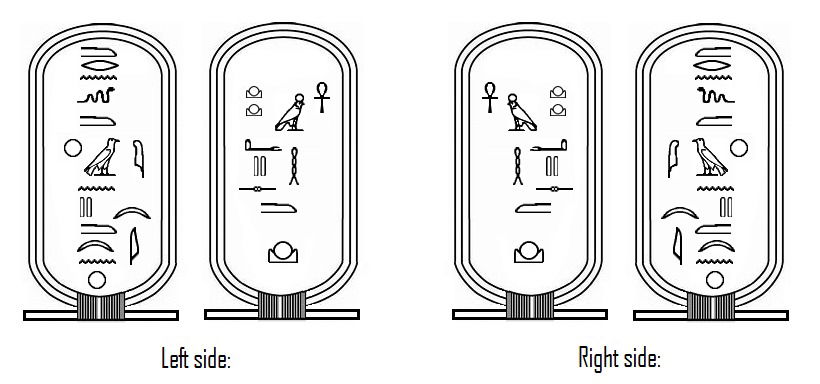
No. [6] An abstract illustration of the ‘cartouches’ and their location on the ‘Torso of Nefertiti - Aten ‘cartouches’’ held at The Metropolitan Museum of Art, New York: from the Great Temple of the Aten, Tell el-Amarna (Akhetaten) 18th Dynasty, Ancient Egypt; made from indurated limestone (Cir. 1352 - 1336 BC).
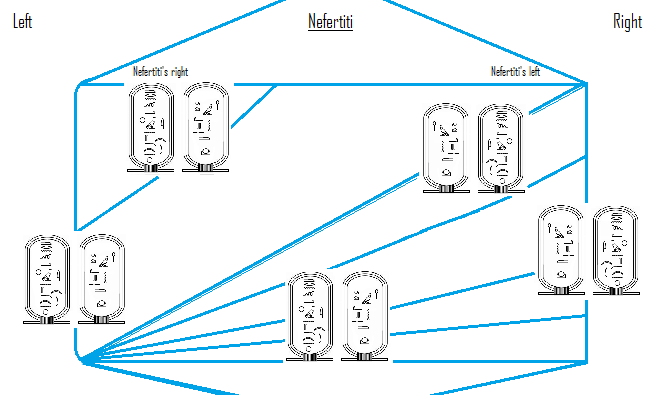
No. [7] An abstract illustration of some of the ‘cartouches’ that can be found as part of a chronological system as ‘nomenclator’ - for use as proper nouns - to identify (in this example - Nefertiti’s ‘Aten personification’) Nefertiti as: individual, queen, mother and an 18th Dynasty Ancient Egyptian originally from a specified region (Thebes) of ’Ancient Egypt’ (a person described as in form, time, and place).
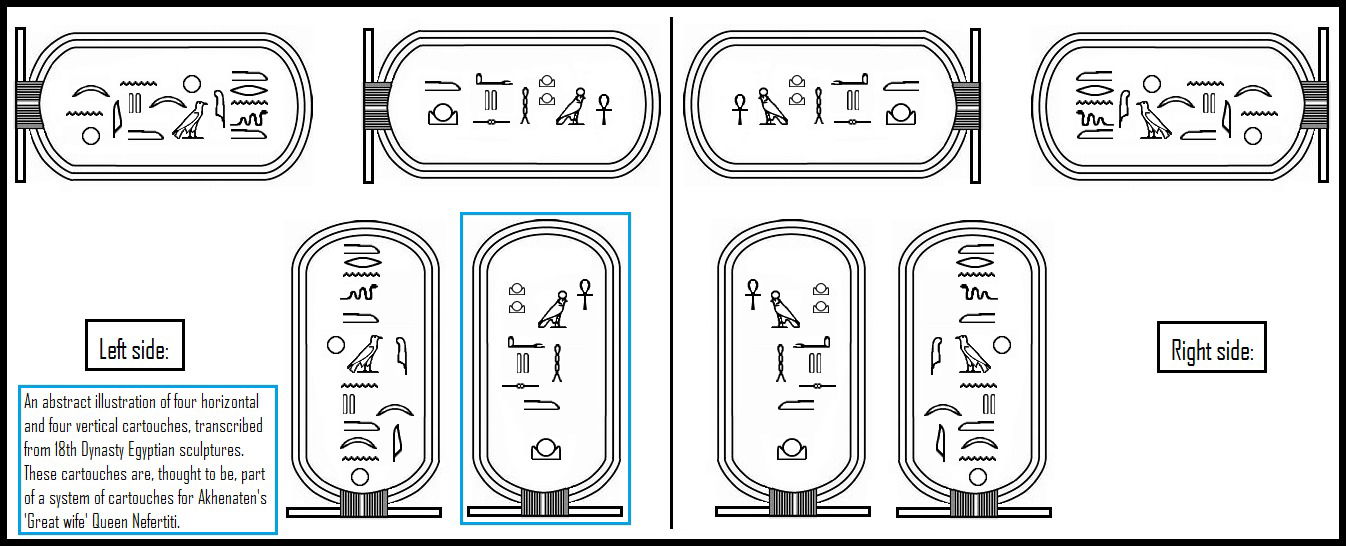
No. [8] An example of Nefertiti’s ‘Aten ‘cartouches’’ used on architectural sculpture (1): a fragment of a stela showing ‘cartouches’ of Akhenaten, Nefertiti, and Aten, Tell el-Amarna (Akhetaten) 18th Dynasty, Ancient Egypt, Petrie Museum of Egyptian Archaeology, London - Wikipedia.org - https://en.wikipedia.org/wiki/Cartouche
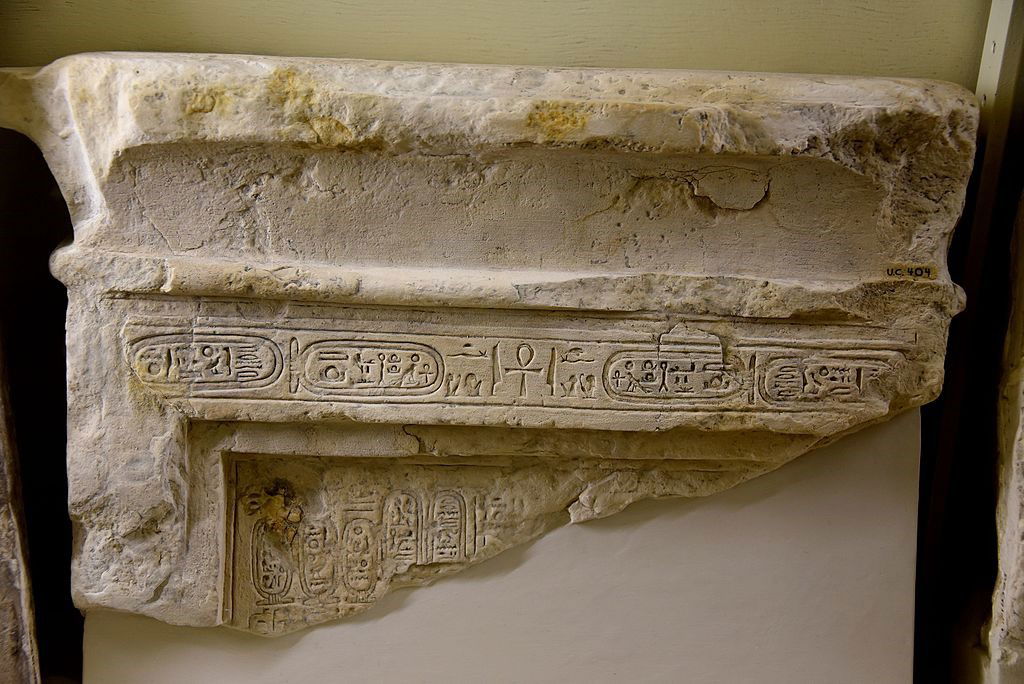
No. [9] A close-up image (see, No. [8]) of an example of Nefertiti’s ‘Aten ‘cartouches’’ used on architectural sculpture (2): a fragment of a stela showing ‘cartouches’ of Akhenaten, Nefertiti, and Aten, Tell el-Amarna (Akhetaten) 18th Dynasty, Ancient Egypt, Petrie Museum of Egyptian Archaeology, London - Ancient-egypt.co.uk - http://www.ancient-egypt.co.uk/index.htm
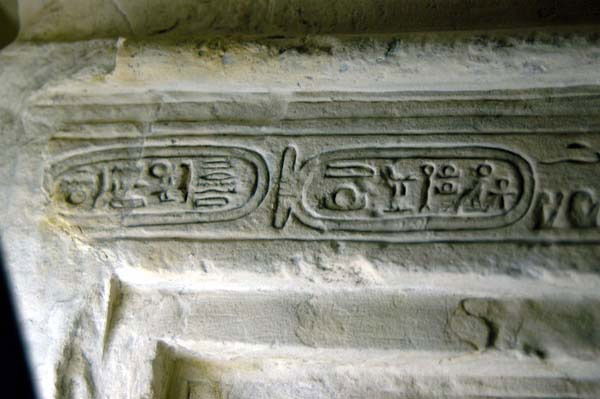
No. [10] An example of a wall painting (18th Dynasty) from the Tomb-chapel of Nebamun (Room 61) held at The British Museum, London - (Wikipedia.org - https://commons.wikimedia.org/wiki/Category:Tomb_of_Nebamun)

No. [10]b. Two hieroglyphic examples identified (‘inked’ in blue) in a wall painting (18th Dynasty) from the Tomb-chapel of Nebamun (Room 61) held at The British Museum, London: a. Hieroglyphic elements that form a ‘cartouche’; b. Nebamun holding a lassoed rope - representing a ‘Shen sign’- (Wikipedia.org - https://commons.wikimedia.org/wiki/Category:Tomb_of_Nebamun)

No. [11] The vulture goddess (Nekhbet) carrying a ‘Shen ring’ - the Mortuary Temple of (the 18th Dynasty pharaoh ‘queen’) Hatshepsut, Theban Necropolis, Deir el-Bahari, Egypt - Wikipedia.org - https://commons.wikimedia.org/wiki/Category:Shen_ring
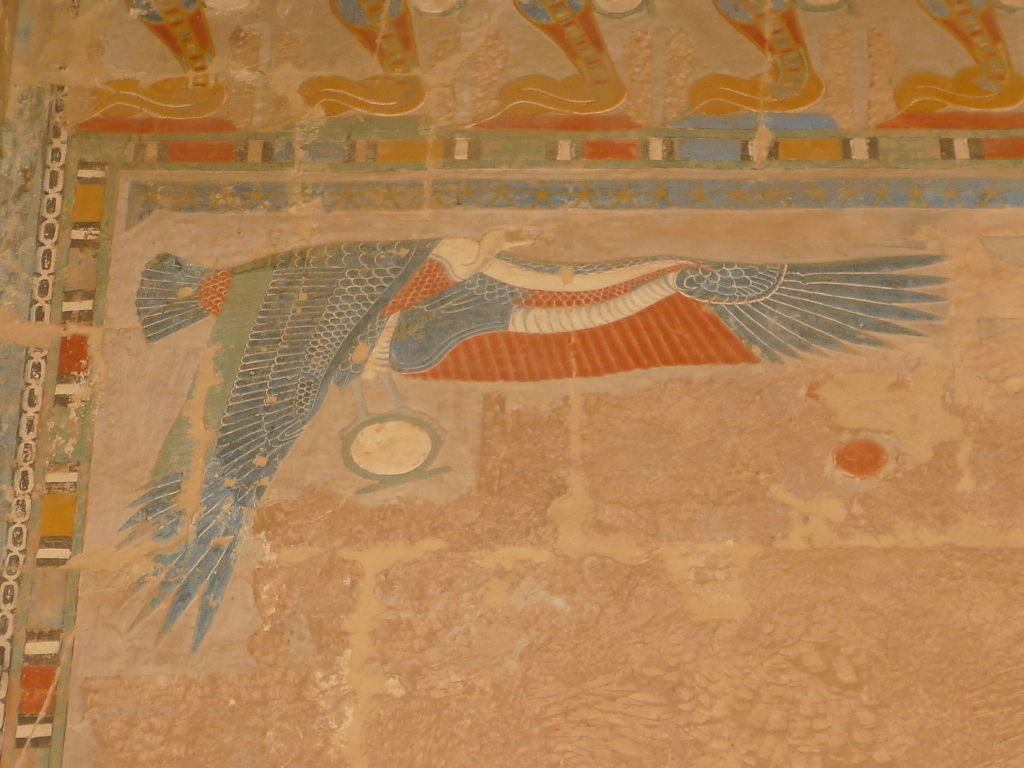
*No. [12] A ‘Shen ring’ from the Ptolemaic period (Cir. 320 BC) - a hieroglyphic painting with a snake motif (possibly a ‘nome’ reference as ‘Wadjet’) from the newly discovered tomb (Oct. 2018) al-Dayabat, Sohag, Egypt - (see, the BBC video, in the web-page, for the picture image) - Archaeology newsnetwork.blogspot.com - https://archaeologynewsnetwork.blogspot.com/2019/04/ptolemaic-era-tomb-discovered-in-upper.html#IKdkEkdFsDYggR3B.97
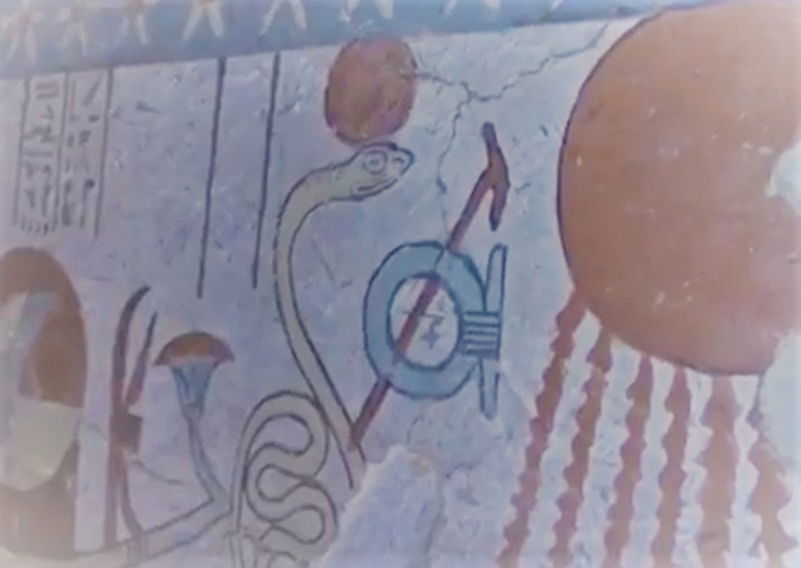
No. [13] The vulture goddess (Nekhbet) carrying a ‘Shen ring’ - the Ancient Egyptian Royal vulture pectoral which was found placed on the head of the mysterious late 18th Dynasty pharaoh in ‘Tomb KV 55’ (1907) in the Valley of the Kings. It is thought that the pharaoh ‘king’ was either Akhenaten or Smenkhkare, of the ‘Amarna period’ - Wikipedia.org - https://en.wikipedia.org/wiki/KV55
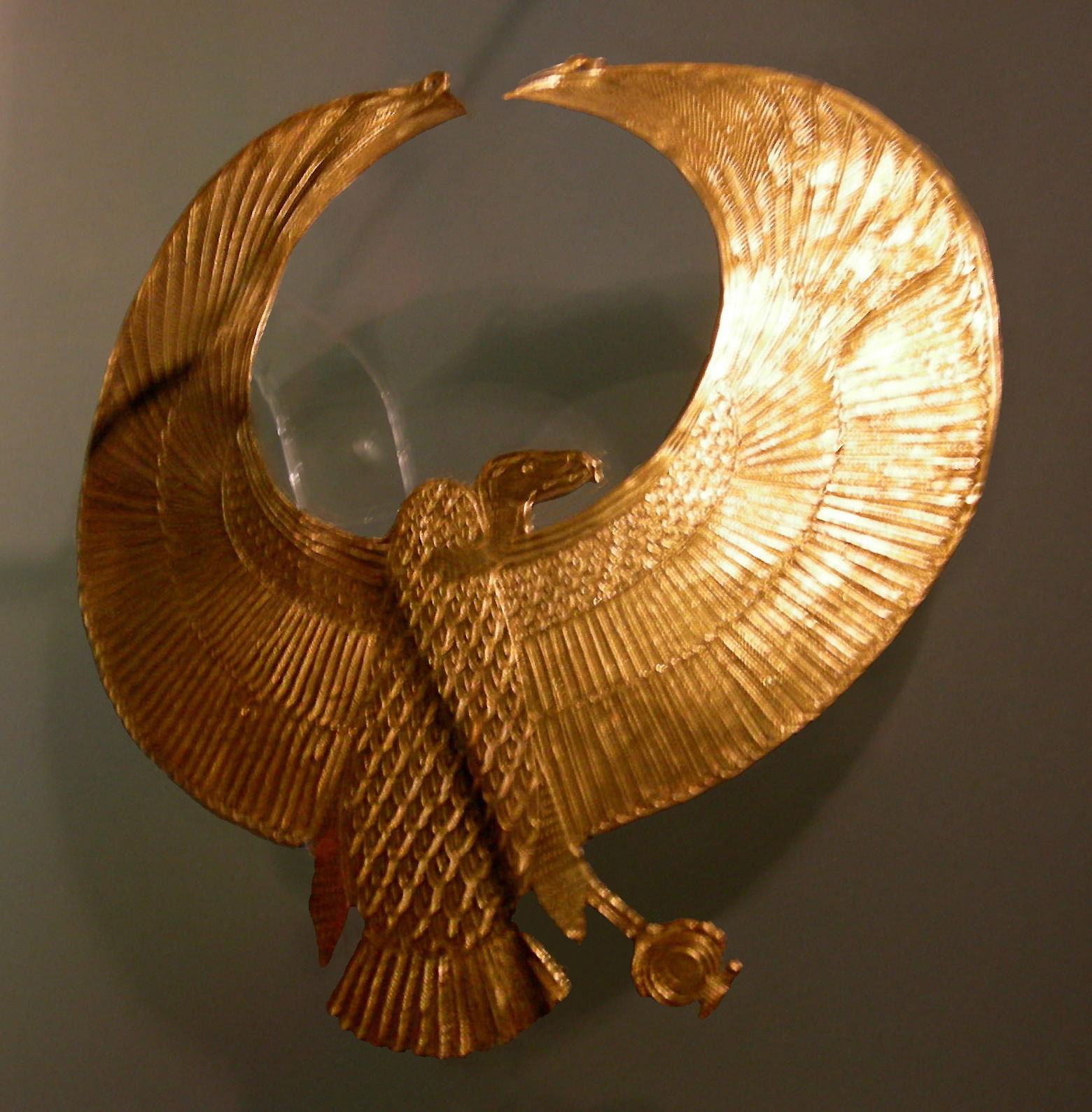
No. [14] The vulture goddess (Nekhbet) carrying in both talons a ‘Shen ring’ - jewellery ‘discovered on the mummy’ of ‘Tomb KV 62’ (1922) Tutankhamen’s tomb - Wikipedia.org - https://commons.wikimedia.org/wiki/Category:Treasure_of_Tutankhamun
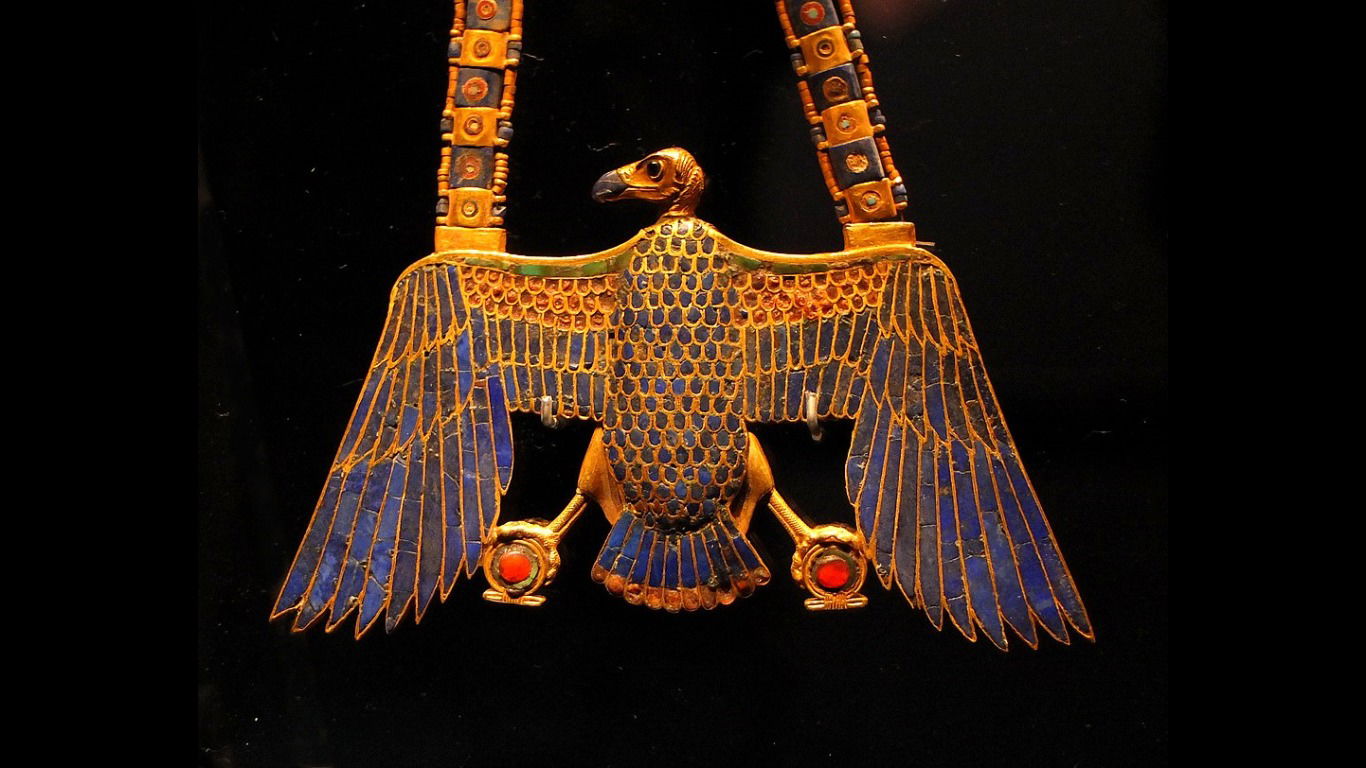
No. [15] The falcon god (‘Horus’ as Ra-Harakhty) carrying in both talons a ‘Shen ring’ - jewellery ‘discovered on the mummy’ of ‘Tomb KV 62’ (1922) Tutankhamen’s tomb - Wikipedia.org - a. https://commons.wikimedia.org/wiki/Category:Treasure_of_Tutankhamun | b. (further examples of the ‘Shen ring’) - https://commons.wikimedia.org/wiki/Category:Amulets_of_Tutankhamun
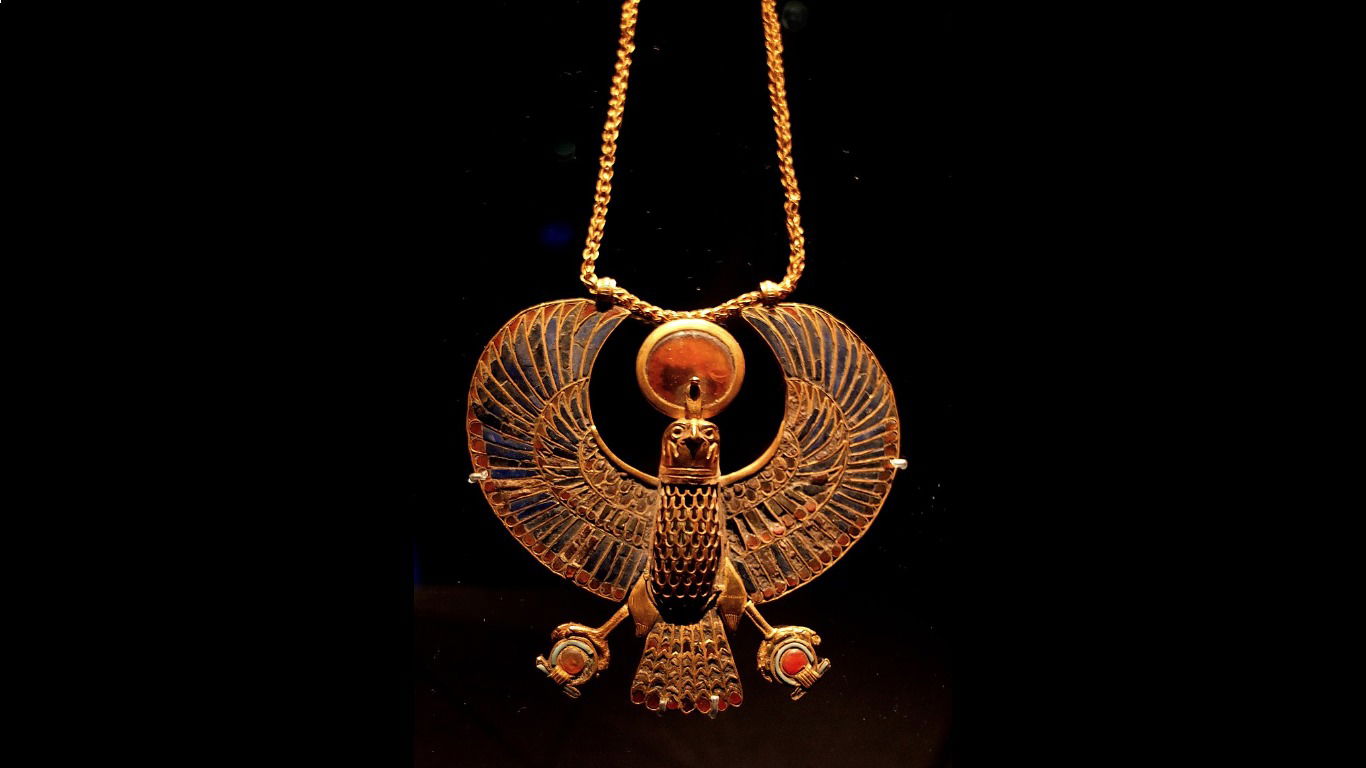
TEXT END: MAY 2019.



